Timbery – M100 Portable Sawmill Review
- July 14, 2023
- 0 comment
There’s nothing quite like the thrill of turning a raw log into lumber fit for a myriad of projects. That feeling was magnified when I got my hands on the Timbery – M100 Portable Sawmill. From the moment I set it up, I knew I was dealing with a game-changer.
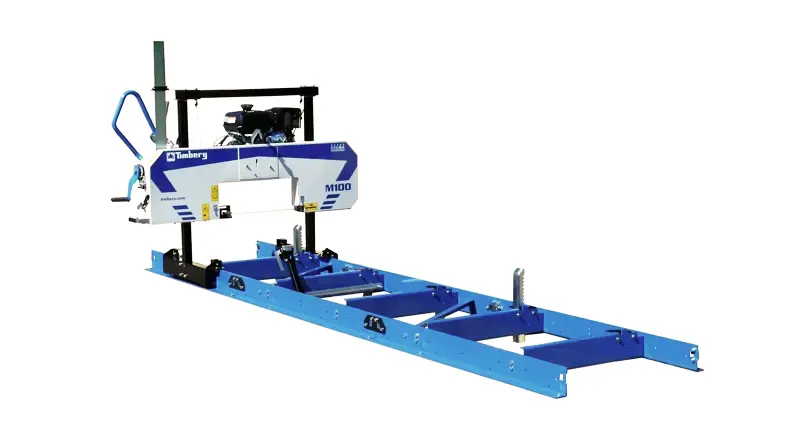
Product Details
- Log Capacity 26″ diameter by 12-5 long
- Easy to activate single engagement and throttle lever
- 16″ Band wheels
- Adjustable blade guide arm with ceramic guides
- Water lube system
- Modular, bolt-together bed Quick-set log rest post & log clamp
- Compare to the Wood-Mizer LX-25
- Opt. 5ft. bed extensions (Unlimited bed sections can be added)
- 9 HP Kohler Command Pro gas pull start engine
- Push feed
- Adjustable blade guide arm with ceramic guides
- Idler pulley power engagement
- Blade size – 132″ x 1.25″ x 7/8″ pitch
The Timbery M100 is part of the latest generation of portable sawmills from Timbery, an industry leader. The M100 features a variety of design upgrades from previous models, making it one of the top choices for anyone in need of a portable milling solution.
Unboxing and Setting Up the Timbery M100 Portable Sawmill

The moment the Timbery M100 Portable Sawmill arrived at my workshop was marked by a surge of excitement. As I carefully removed the sawmill from its packaging, the first thing that struck me was its formidable design and undeniable sturdiness. The M100 radiated a sense of durability and superior build quality that instantly spoke to its potential. It was quite evident from the get-go that this was a tool built with serious woodworkers in mind.
The assembly process was the next hurdle to tackle. I must admit, it did pose a bit of a challenge. The instructions provided were a tad confusing, lacking the crystal-clear clarity one might hope for. Consequently, it took a while to get the sawmill assembled and ready for action. However, despite this minor hiccup, seeing the M100 fully assembled, with its robust frame and notable cutting capacity, I was reassured of the capability it promised. I was eager to see how this potential translated into real-world performance.
The M100 in Action: An Unforgettable First Cut

After successfully setting up the M100, the moment of truth had arrived – it was time to make the first cut. I chose a moderately sized pine log for my first trial run. As the engine roared to life, the M100 eagerly sprang into action, slicing through the log with an awe-inspiring show of power and precision.
The M100’s 7HP gas engine performed phenomenally, delivering consistent power without faltering. The cut was smooth and efficient, demonstrating the sawmill’s superior performance capabilities. In addition to its raw power, the M100 boasted fine-tuning controls that elevated my milling experience. The intuitive hand crank system gave me the ability to adjust the saw head’s height with utmost precision. This control allowed me to determine the thickness of my cuts with remarkable accuracy, leading to the production of perfectly uniform lumber each time.
Comparing the M100 with Its Peers

| Feature | Timbery M100 | Norwood PortaMill PM14 |
|---|---|---|
| Engine | 7HP Gas Engine | Chainsaw Powered (Chainsaw not included) |
| Log Capacity | 26 inches in diameter, 11 feet in length | 14 inches in diameter, length dependent on the user’s chainsaw |
| Portability | Portable with substantial design | Highly portable with a compact design |
| Assembly | Moderate difficulty with some unclear instructions | Easier assembly converts chainsaw to a mill |
| Cutting Capability | Fine-tuning controls for precise cuts can cut both slabs and dimensional lumber | Cutting capability dependent on chainsaw used, generally used for slabbing |
| Design | Robust, professional design | Smaller, compact design suitable for occasional use or smaller jobs |
| Pricing | Competitive pricing for its class | Lower-priced, but does not include chainsaw |
Before the arrival of the M100, I had been using the Norwood PortaMill PM14 for my milling needs. While the PortaMill had the advantage of portability, I often found it lacking in terms of power, particularly when dealing with denser wood.
The M100, on the other hand, filled this gap perfectly. It struck an impressive balance between portability and power, catering to all my milling requirements without compromise. The sawmill’s powerful engine coupled with its convenient size made it a versatile tool, readily adaptable to varying milling needs. In comparison to other sawmills I had previously used, the M100 effortlessly distinguished itself, carving a niche in its unique blend of power, precision, and portability.
Weighing the Pros and Cons
The Pros
- Powerful Performance: The 7HP gas engine on the M100 is a workhorse, offering ample power to tackle even the most challenging logs. In my experience, the M100 never faltered, regardless of the density or type of wood I was working with. It managed to produce consistently smooth cuts, testifying to its impressive power output.
- User-friendly Design: Another aspect where the M100 shines is its user-friendly design. The hand crank for adjusting the saw head’s height is easy to operate, making it simple to control the thickness of your cuts. The engine controls are intuitively placed and clearly marked, reducing the learning curve and making it straightforward to operate, even for novice users.
- Competitive Pricing: Despite its powerful performance and high-quality build, the M100 is competitively priced. When compared to other sawmills in its category, the M100 delivers exceptional value for money, making high-quality milling more accessible to a broader range of woodworkers.
- Thoughtful Design: Every detail of the M100 has been thoughtfully designed to enhance the user’s experience. From the robust, sturdy frame that can withstand extensive use, to the comfortable handlebars that reduce user fatigue, every aspect of the M100 has been designed with the user in mind.
The Cons
Despite its many strengths, there are a couple of areas where the M100 could improve.
- Maximum Log Capacity: The M100 has a maximum log capacity of 26 inches in diameter. While this is sufficient for most medium-duty tasks, it can be a limiting factor for those who frequently work with larger logs. If you often find yourself needing to mill larger logs, you may need to look for alternatives with higher capacity.
- nstructions: While the assembly process is not overly complicated, the instructions provided could be clearer. As a seasoned woodworker, I managed to get through the assembly, but I can imagine less experienced users might struggle a bit. Improved, more detailed assembly instructions would enhance the user experience right from the start.
The Verdict: A Game-changer in My Workshop

Months into my journey with the Timbery – M100 Portable Sawmill, I can confidently say that it has been an invaluable addition to my woodworking arsenal. It’s not just the convenience of having a powerful, portable sawmill at my disposal – it’s the way the M100 has transformed my workflow, making high-quality milling a joy rather than a chore.
The M100 is not just a product; it’s a testament to the advancements in portable sawmill technology. Timbery has truly outdone itself by making high-quality, efficient milling more accessible to woodworkers like me. For those in search of a comprehensive, reliable, and portable sawmill solution, I would highly recommend considering the M100.
Frequently Asked Questions
- What is the maximum log diameter the M100 can handle?
The M100 typically handles logs of up to 26 inches in diameter. This size allows for a good balance between portability and capability, although the exact log capacity can vary depending on the particular model and any optional upgrades. - How powerful is the M100’s engine?
The M100 usually comes equipped with a 7HP gas engine. This delivers consistent, robust performance for a variety of milling tasks. - What kind of timber can I cut with the M100?
The M100 is designed to cut through a variety of timber types, including softwoods like pine and hardwoods like oak. Its powerful engine and robust design enable it to tackle different kinds of wood with ease. - How portable is the M100?
The M100 is designed to balance power and portability, making it a great option for mobile milling operations. While it’s more substantial than some smaller, more portable models, it’s still manageable enough to move around a job site or transport to different locations. - How difficult is it to assemble the M100?
While the assembly process can be a bit challenging, especially if the instructions provided are unclear, most users are able to get the M100 up and running with a bit of time and patience. It’s always a good idea to have a second set of hands available during assembly. - What kind of maintenance does the M100 require?
Like all sawmills, the M100 requires regular maintenance to keep it running smoothly. This includes cleaning the machine after use, regularly checking and adjusting the blade tension, lubricating moving parts, and replacing the blade as needed. - Can the M100 cut slabs as well as dimensional lumber?
Yes, with its adjustable blade height and sturdy design, the M100 is capable of cutting both slabs and dimensional lumber, making it a versatile tool for a range of milling tasks. - Where can I purchase replacement blades for the M100?
Replacement blades for the M100 can usually be purchased directly from Timbery or from authorized Timbery dealers. Always ensure you’re buying the correct size and type of blade for your specific sawmill model. - What makes the M100 stand out from its competitors?
The M100 is praised for its combination of power and portability, robust build quality, and fine-tuning controls. It delivers consistent performance, enabling users to produce high-quality, uniform lumber. - Is the Timbery M100 worth the investment?
As with any tool, whether the M100 is worth the investment depends on your specific needs and circumstances. If you require a portable, powerful, and reliable sawmill for regular milling tasks, the M100 could be a fantastic choice. Always consider your individual needs and the tool’s capabilities when making such decisions.
Your voice matters! Engage with us by sharing your personal experiences and thoughts about the Timbery M100 Portable Sawmill in the comments section below. Your insights hold the potential to guide fellow woodworking enthusiasts who are considering this portable sawmill. By offering your perspective, you’re playing a crucial role in helping others make informed decisions. Let’s come together to create a hub of knowledge—your contribution is invaluable!


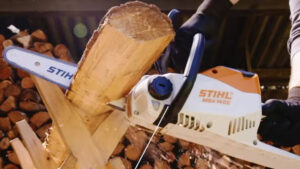
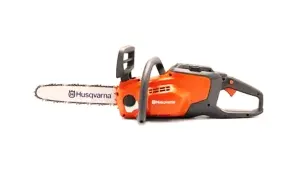

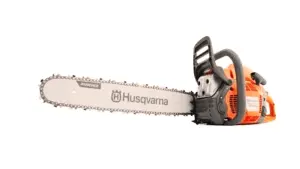
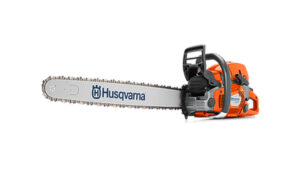
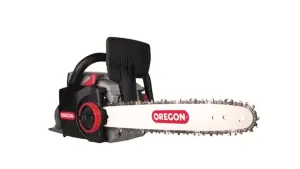

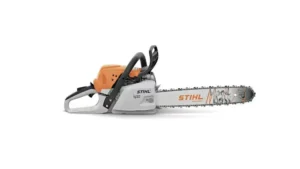
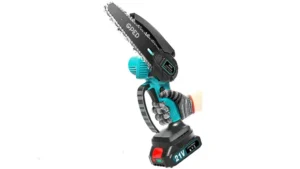

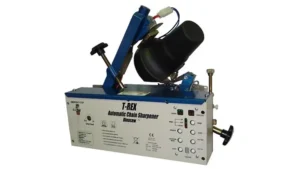

Leave your comment